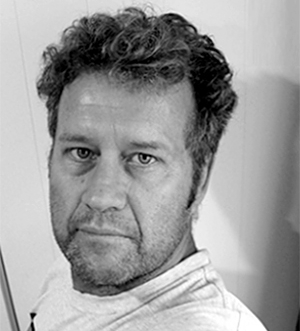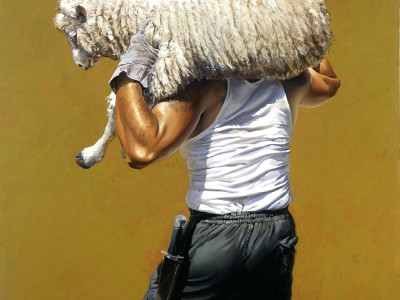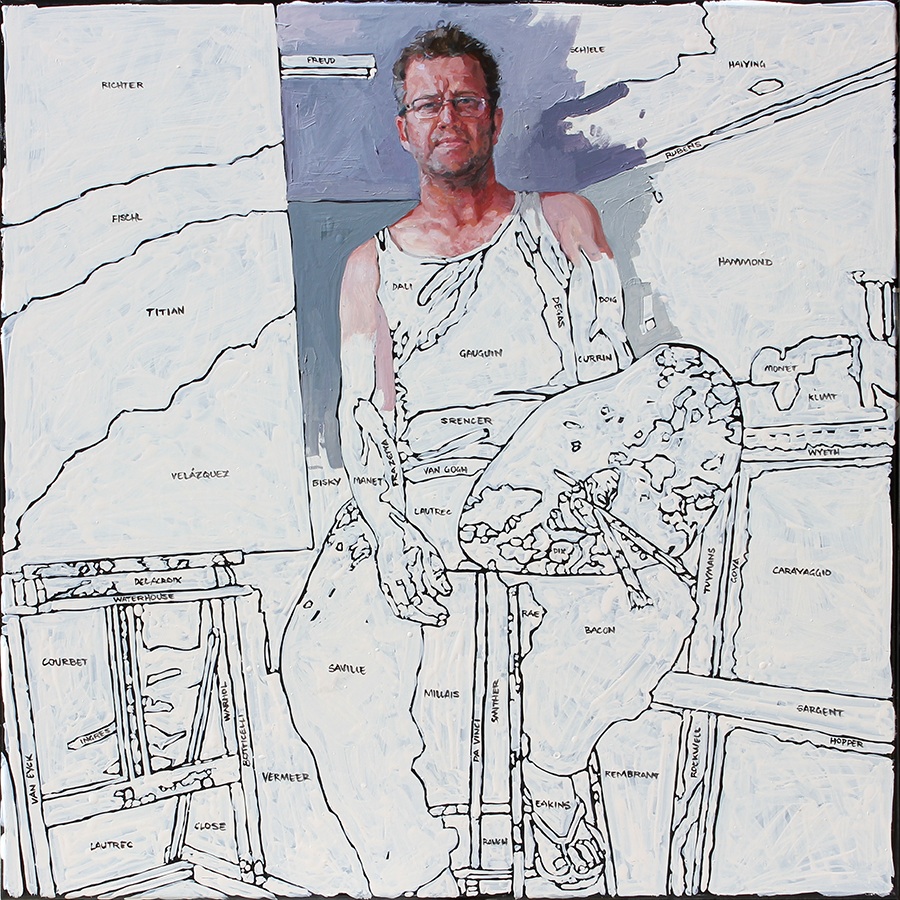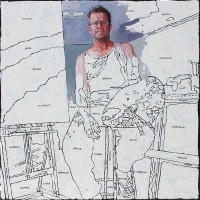What led you to become an artist, and, in particular, a painter?
Early on, I never believed that being an artist could be a self-sustaining profession (and at times it’s still debatable!). As a consequence, I spent many years airbrushing and sign writing, all the while covertly yearning to be at the beginning of the creative process; to be the one shaping the decisions instead of replicating someone else’s ideas.
I always had artistic leanings but hadn’t contemplated painting in oils until I was living in London, many miles from home, and airbrushing large display advertisements for airport terminals. A colleague bought some old Keeps oil paints to work, I tried them and fell instantly in love. The organic slipperiness, the responsiveness of the medium, captured my attention and consumed me – it was like a secret pleasure manipulating this slippery pigment, it bought me back to myself. From then on I had my means of communication and began my journey instigating my own creative concepts.
It is hard to justify something as ridiculous and as old as painting is; it’s so redundant in today’s society, superfluous even with the plethora of images saturating our everyday vision. To connect to others through being disconnected and alone in a studio seems almost anti-technological in this interconnected age. Perhaps this space and time that the artist creates poring over a work is what also creates the space for a viewer to become quiet, to contemplate and reflect. Whatever it is, I believe that painting still holds up against all of its successors. I find painting to be the most direct, expressionistic, authentic and responsive medium for a subjective communication. It is the result of the interconnectivity of the hand, the eye and the canvas; the manifestation of these things – interacting. Paint on the end of a brush shaped by the subtle movements of the hand and decisions of the eye is a complex, idiosyncratic signature. Each mark matches the temperament of the painter exactly – you can’t make a mark that isn’t you!
What style of painting are you most drawn to?
New Zealand is a long way from anywhere and Tauranga (a small coastal town at that time) was a wasteland for anything art; my only artistic influences were garnered from reproductions: reduced, flat two-dimensional, unreliable pages in books. An overseas trip to the National Gallery in Washington was my first real experience in seeing ‘known’ artworks in the flesh and I was appalled! Everything I had seen (and thought I had known) was lifeless; endless reproductions had misrepresented oil paintings. These paintings were fleshly, moulded by human hands and I could distinguish the distinctive qualities of each brushstroke. I stood before a Monet and was galvanized by its physical presence – each stroke had a depth, an individual form, that made the century old work sing. From then on I have enjoyed work that isn’t too concentrated upon building the illusion,(hiding the slippages of human intervention) and is casual about exposing its own fabrication. So, there is no particular style that I’m drawn to, except perhaps to say that I like a kind of expressionism mixed with realism. Which means for me, a melding of the inner world with the exterior reality.

As you reflect upon the various series you have created, do you have a particular favorite?
No I don’t have a favorite. The different series fulfill different aspects of myself, and perhaps are an extension of what I was experiencing at that time.
Out of all the works you have created, which was the most challenging, and why?
All the works I have created have been challenging at some point in their creation. I struggle with commissions, if they are too restrictive or specific. My creativity needs room to breathe and the works have to have a life of their own; a little mystery. I often feel that I go on a journey into each painting, become lost within it and then must find my way out again.
Has there been a study of work that you have found to be so emotionally disturbing that you have turned away from it?
I see Duchamp’s idea that the viewer contributes their own interpretation to the artwork as problematic for the artist (the end of the creative process is also a beginning!). So, I devised a plan to release my illusionary control over the artwork by exploring the idiomatic slippages of language and specifically oxymorons. Part way through this research I was drawn to television footage of an infamous New Zealand murder. The man (Mark Lundy) gave a hyperbolic performance of innocence at the funeral of his wife and child who were both brutally murdered. His display before news cameras in 2000 condemned Lundy in the arena of the public consciousness, long before he was convicted of the crimes in the courtroom. The works created were an attempt to understand the unfathomable; how a man could destroy his own family.
Many of the works were endeavoring to be ironic, but they became misquoted and awkward. I felt disconnected, fragmented and alone. In the end I realized I had become entangled in the work and had to give up trying to comprehend the incomprehensible.
What inspires you lately? What are you currently working on?
I am very excited about getting involved in some new work. I’m still restless and my wife, myself and our kids have recently purchased a house in Auckland. I’m just completing a purpose built studio on the property. It’s a new space, which brings with it a new energy. I’ve had enough study for a while, it’s time to paint!
It’s time to shake things up a bit — this is especially true for my technical approach. My new direction is to get a bit looser, express some attitude and expose my experiments within the work. I’m happiest throwing the paint on in a scribble, a shorthand of the real world and I am going to endeavor to display this in an interesting and new way.
We loved reading the essays on your website—it sounds as though the MFA program you completed was superb for you. We feel you could totally become an art academic and/or instructor if you wished. Would you enjoy that possibility?
I definitely find the exchange of ideas invigorating, and thoroughly enjoyed the experience of being around my peers. The insights instructors and other artists can give you is rewarding, sometimes being so close to the work blinds you it. To be in a diverse group situation and feed off each other as well as nourish another person is a wonderful growth experience for an artist.
The only limitation I could see is that time spent sharing with others leaves less time creating for oneself.




